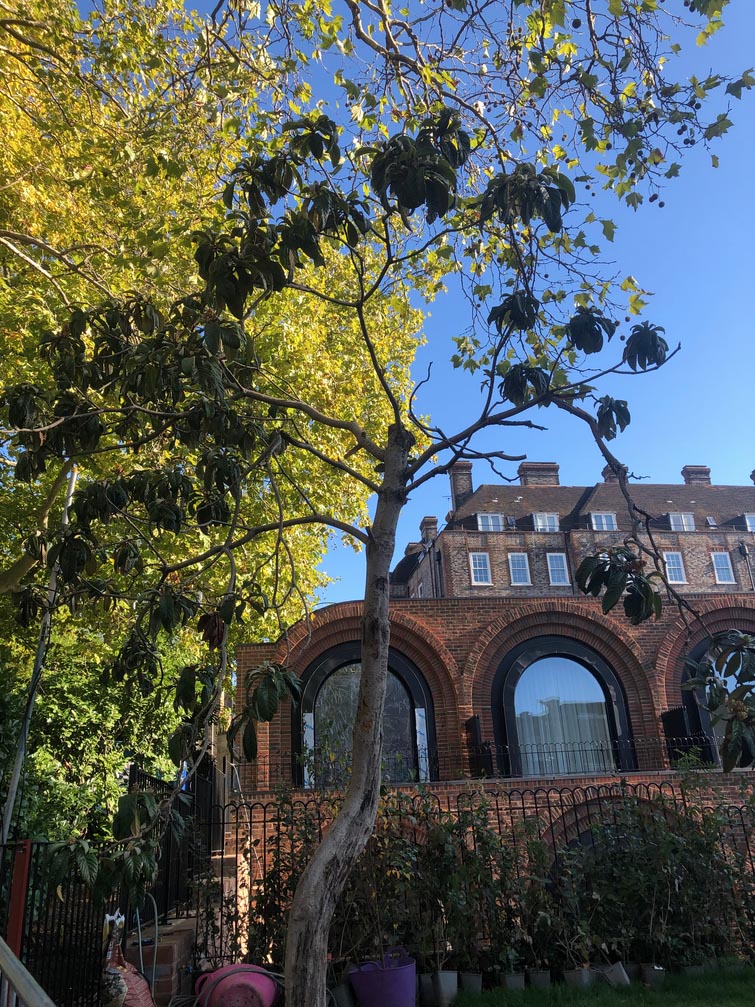
The loquat tree in Highgate Road is recovering well and is bearing new shoots
IT is a form of agricultural archaeology, a tell-tale sign of recent social history.
I am talking about the ubiquitous loquat tree – a foreign species that in the past 70 years has become popular in these parts.
And one Kentish Town-based gardener, Mick Duffy, has revealed why this tree can be found dotted about our front gardens – and how it holds a clue to a special story worth celebrating.
In the post-war period, Camden Town was a popular destination for Greek Cypriots migrating to the UK.
And when they arrived to join the bustling, vibrant community already in place, they did not forget the island of their birth.
And one way of remembering what they had left behind was to create a garden with plants that were native to Cyprus.
It means when you walk around NW5, you are likely to spot a mimosa here and there – and another sign of a home that once housed a Greek Cypriot family is the Eriobotrya japonica, or loquat, tree.
Originally from Japan, the trees are a staple plant in Cyprus.
“While they originally come from the east, they have become a tree that is immensely popular in Cyprus,” Mick reveals.
The evergreens can grow up to four metres tall and are hardy, enjoying long lives.
“You find them across the borough – Camden Town, Kentish Town, anywhere our Greek Cypriot community has settled over the decades,” he adds.
As well as improving the diet of north Londoners with the introduction of olive oil, pitta bread, taramasalata and other delicious dishes, our Cypriot friends brought some of the Mediterranean to their outdoor spaces, too.
“They are lovely,” he observes. “The fruits are fantastic, a little like the kumquat and when they are in fruit, they look magnificent.”
One loquat that has had particular care can be found in Highgate Road, NW5.
It was planted in the 1960s by Greek Cypriot garage owner, Andy Joanides, and when work began to redevelop the garage into housing two years ago, the loquat was moved before being replanted as work came to an end.
“We put it back in a fortnight ago and it looked a little sad, but it has since recovered well, settled in and is bearing new shoots,” adds Mick.
The loquat remains a green-leaved reminder of the cultural impact immigration has had on our city, and another sign of the beauty different cultures bring when a person uproots their life and makes a new one elsewhere.